The holidays are coming up. What can you do to ensure you’re getting the most out of the season?
Here are some holiday marketing strategies you can use:
When I asked for the best marketing strategies for 2024’s holiday season on LinkedIn, Kaj Kandler told me to make preparations for next year instead.

That’s because I asked too late: Black Friday/Cyber Monday was only two weeks away.
I understand his perspective because holiday campaigns take time:
- Pages need time to rank in Google, around three to six months.
- You need time to create and assemble relevant digital assets, like images, photos, videos, emails, etc.
- If you’re working with influencers and partners, you need time and energy to coordinate, not to mention creating assets.
- If you have plans for a bigger campaign, then the effort required doubles or triples.
So, if you want to have a profitable holiday season, start your prep early.
But don’t worry if you’re reading this post slightly later. It’s not all over yet. You can still apply most of the tactics below, even if it’s just a simpler version. Every effort you make today is also an effort for next year’s holiday season.
People look for holiday-specific keywords during the holiday season. You should be creating pages to rank for these keywords.
For example, Michaela Park of Holafly (a travel eSIM) creates content targeting keywords related to Christmas markets, and Christmas and New Year’s travel destinations.

Here’s how to find these holiday-specific keywords:
- Go to Ahrefs’ Keywords Explorer
- Enter one or a few relevant keywords
- Go to the Matching terms report
- Use the Include filter to look for relevant holidays (e.g., Black Friday, Cyber Monday, Christmas)
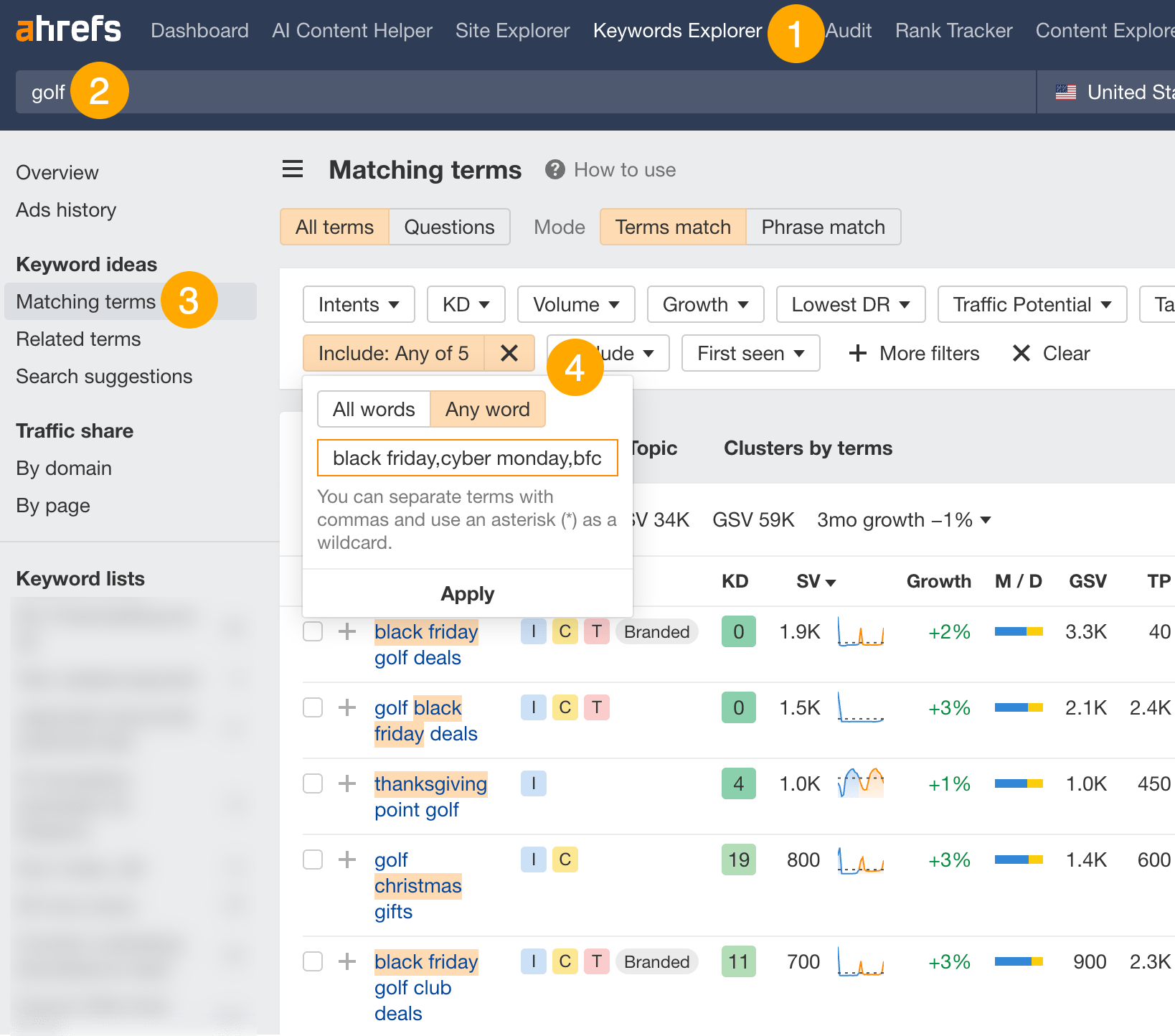
For example, if I’m a store selling golf equipment, I might consider targeting keywords like “black friday golf deals” and “golf clubs black friday”.
Sometimes, people don’t search directly for a holiday. Instead, they search for the person whom they’re buying for. For example, instead of “Christmas”, they might search for a broader term like “gifts for husband”, “gifts for wife”, or “gifts for family”.
To find these keywords, use the Include filter and search for “for dad”, “for mom”, “for wife”, and “for husband”.

Holidays are seasonal within a single year, but when you look at them in decades or even centuries, they are evergreen.
Holidays like Valentine’s Day, Thanksgiving, and Christmas aren’t going anywhere soon. People will always be shopping during these periods. From an SEO perspective, it means search intent isn’t shifting much.
Instead of creating new pages every year, make an evergreen page that you can update one or two months before the holiday. That way, you’ll retain the link equity, continue to build authority to that one page, and hopefully, appear at the top of Google for your target query every year.
For example, that’s what TechRadar does every year for its “Black Friday deals” page. It consistently maintains top rankings yearly:

Even though it doesn’t get much traffic during the off-season, traffic shoots up when holidays come:

If you’ve already created seasonal pages for previous years, consider redirecting them to your evergreen page.
Internal links are links from one page on your website to another. They aid the flow of PageRank around your site, which is important because PageRank is a Google ranking factor.
So, if you add internal links from relevant pages to your important holiday pages, you can boost their rankings on Google.
In fact, this is a tactic you can do anytime, even if you’re “late” to holiday marketing prep.
Here’s how to do this:
- Make a list of all your important holiday pages
- Sign up for our free Ahrefs Webmaster Tools (AWT)
- Run a crawl on your site
- When the crawl is done, go to Site Audit
- Click the Internal link opportunities report
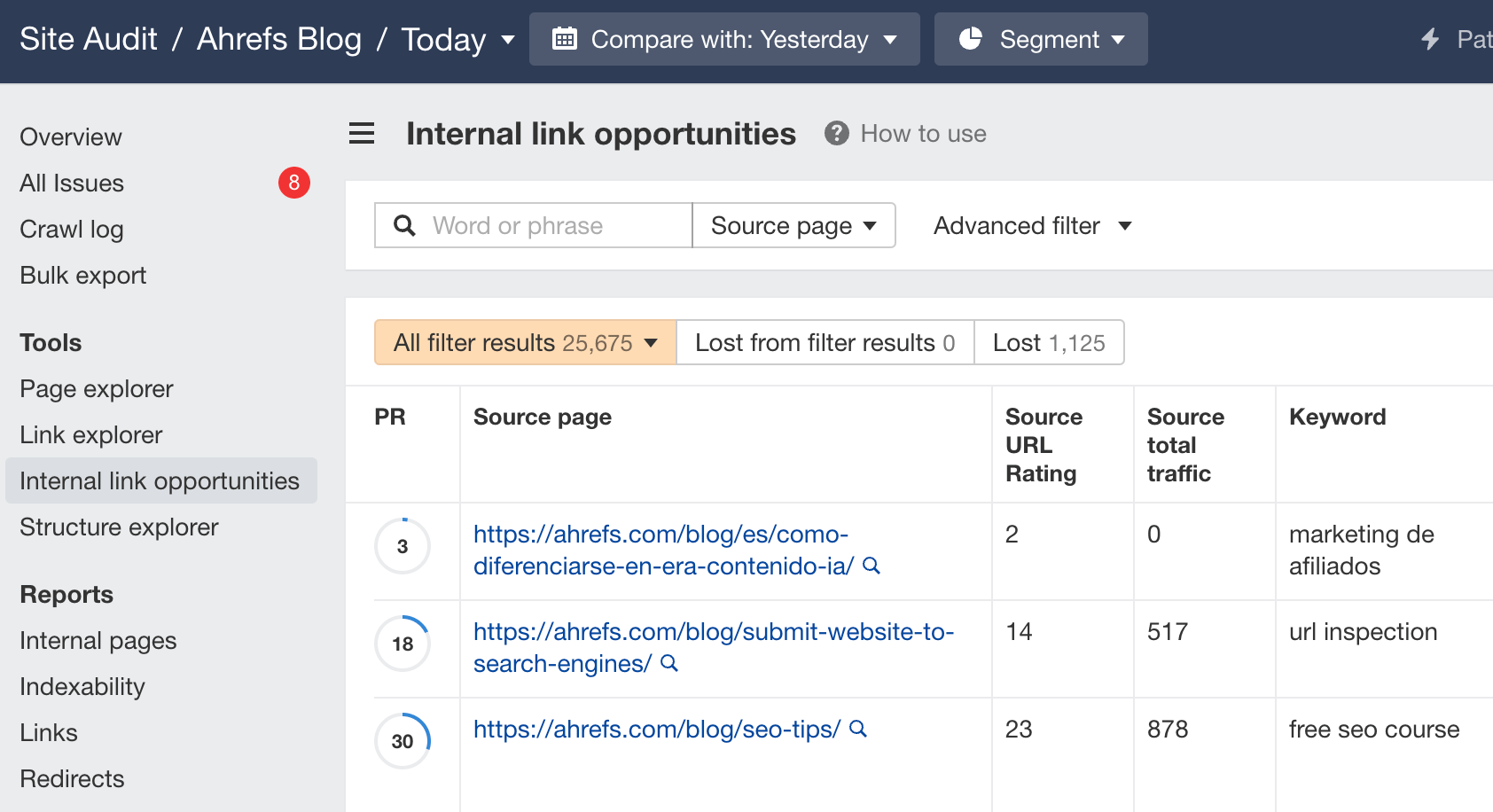
This report will show you relevant internal link opportunities on your site.
To find relevant internal link opportunities, set the filter to Target page and search for your holiday pages.

Look at the suggested opportunities and add internal links where relevant.
Local newspapers will link to anything. I mean, look at this news:

I’m a millennial, but what are my needs?
You can take advantage of this fact by using the Tabloid Technique:
- Find a newsworthy topic
- Pull local data about it
- Send it to local journalists
The hardest part of this tactic is coming up with newsworthy ideas. Fortunately, seasonal topics tend to get attention.
For example, if we search for a topic like “food” in Ahrefs’ Keywords Explorer in the UK, set the growth period to the last three months, and sort from highest to lowest, we’ll see that searches related to Christmas food in various UK supermarkets are trending:

Here are some potential campaign ideas, courtesy of my colleague Joshua Hardwick:
- Compare how much the average family will spend on Christmas food in different parts of the UK
- Compare the most popular Christmas foods in different parts of the UK.
- Compare how many families will be relying on food banks for Christmas dinner in different parts of the UK.
When you’ve settled on an idea, you want to pull interesting data. There are many places you can use, including government databases (e.g. usa.gov for the US, UK Data Service for the UK), international organizations (e.g., World Bank Open Data), and research databases (e.g., Pew Research Center).
Then, you’d want to organize them into a post and pitch it to local journalists. How? I highly recommend reading Joshua’s guide on the Tabloid Technique, as he goes into deep detail on how to execute it from start to finish.
Later on, you’d want to add internal links from this post to your important holiday pages, via what we call the Middleman Method:
https://www.youtube.com/watch?v=433XlvMl508
Hristo Rusev, CEO of ScalaHosting, offered an interesting idea: Add a social responsibility element to your holiday promotions.
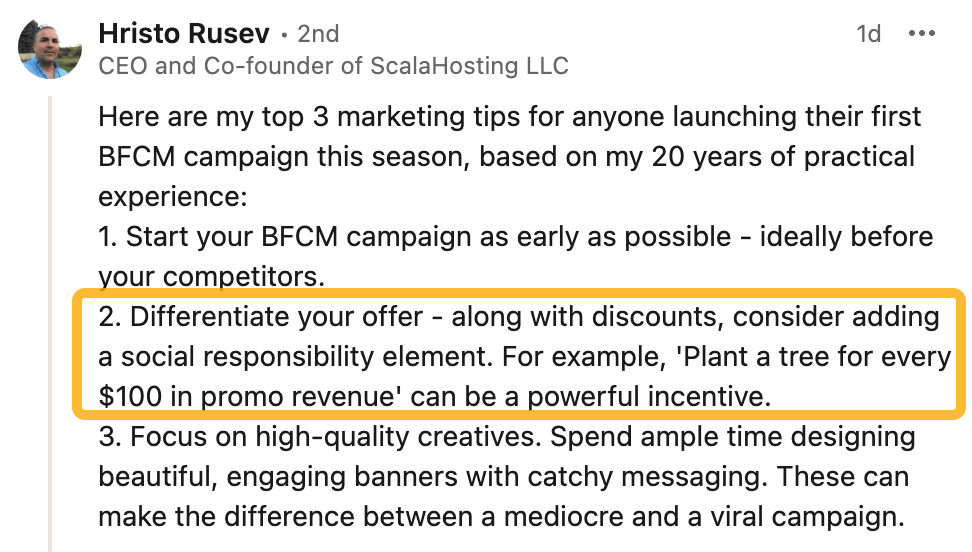
Yes, the holiday season is about deals. Everyone’s greed is filled to the brim, and your customers are gunning for flash sales, big discounts, and generous offers.
But the holiday season is also about giving, ****, and warmth. Coupled with the fact that consumers today are more socially responsible, appealing to their ethical beliefs could help your offers stand out amongst the hundred other “buy now” emails in their inbox.
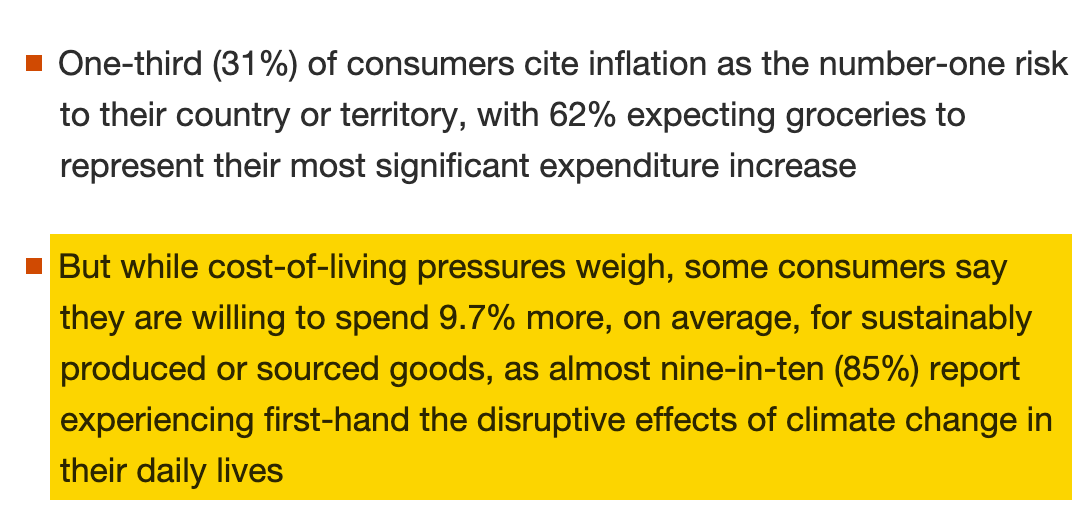
For example, Wild, which sells bathroom products, ran a Black Friday campaign in 2022 that not only gave a 25% discount but also promised to plant 100,000 trees over 10 days.
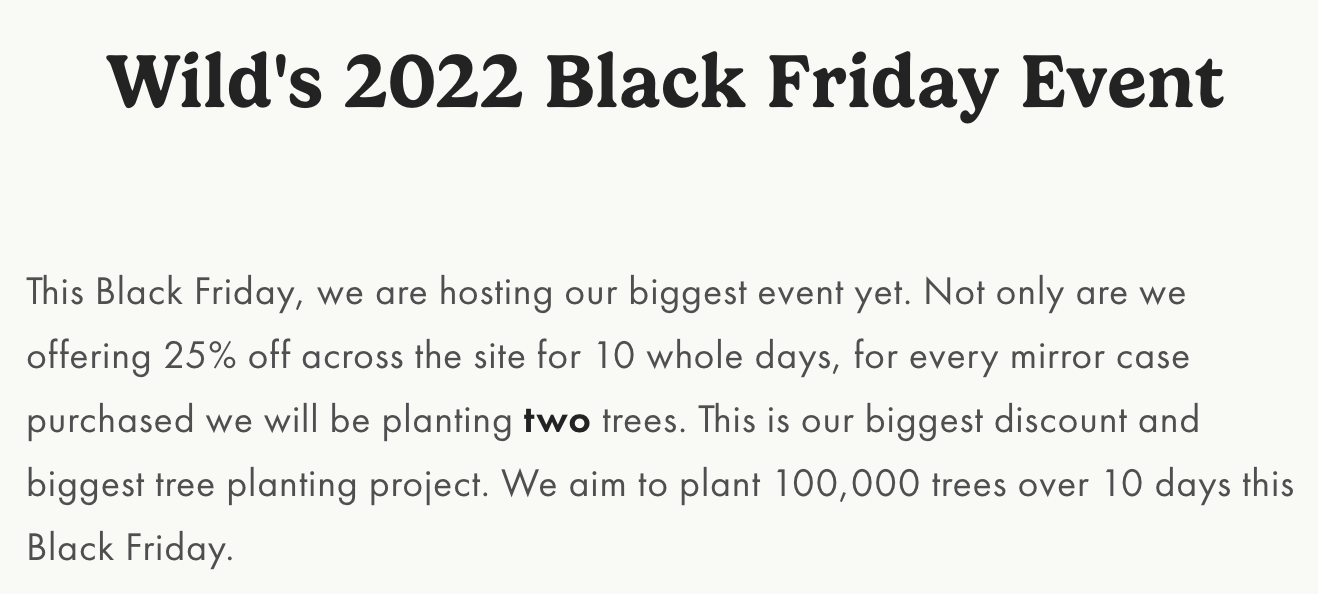
Don’t pay lip service to social responsibility. Your customers can see through bluewashing. Make sure you offer to do something your target customers care about. Don’t plant trees if you sell pet products; potentially donate to an animal shelter instead.
Influencer marketing can help expand the reach of your holiday marketing campaigns and drive social media engagement with your brand.
For example, Drypers, a baby diapers brand, collaborated with Singaporean influencer Mongabong (IG: 312K followers) to promote their Singles’ Day sale:

I asked Raúl Galera, Growth Lead at ReferralCandy, for his influencer marketing tips:
“Here are my recommendations for successfully working with influencers without repeating the same mistakes other brands have made:
- Target smaller, more relevant influencers: This might seem obvious, but many brands still chase bigger names who may not align with their brand values or audience, simply due to their size. Instead, focus on niche or even micro-influencers who could genuinely be your customers—those who are popular but, more importantly, have an engaged and authentic community.
- Work on a performance basis: Offer influencers a deal where their payment is based (entirely or primarily) on the revenue they generate. Many influencers might not agree to this because their audience might not be as engaged as they claim. If they do agree, encourage them to see your brand as a team they’re part of rather than just another campaign.
- Be generous: A 10% commission won’t cut it. If possible, offer 20-25% or create a tiered commission structure. You could also consider giving commissions on the lifetime revenue generated by the customers they bring in, not just their first purchase. This keeps them motivated to consistently talk about your brand over the long term. How much are you spending on Meta ads? Use that as a benchmark—chances are influencer marketing will cost you far less.”
Holiday marketing is all about sending the right emails. However, you want need to be able to stand out from the tens of hundreds of other emails cluttering your customers’ inboxes.
That’s why strategy number #1 is so important. Timing is everything.
Here’s what Mykolas Bartkus says:
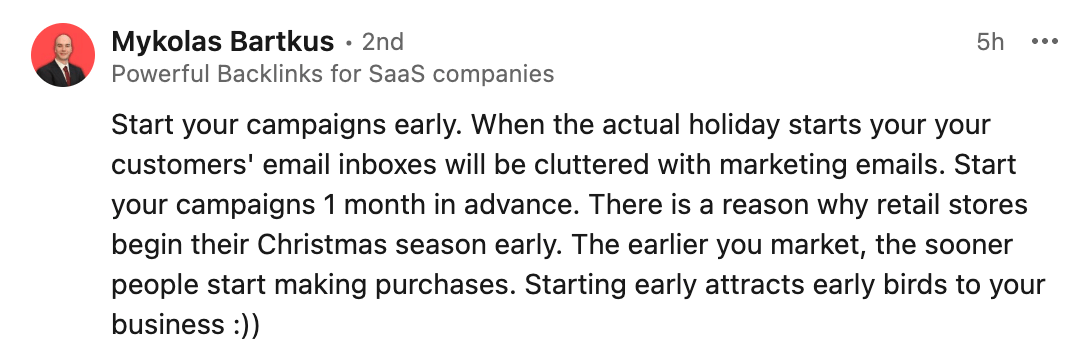
However, playing this game can lead to an arms race. We might end up at a point where the next Black Friday offer starts when the current Black Friday ends. That’s why Elanor Parker cautions:

But besides starting earlier than your competitors, how else can you stand out with emails? Here are some ideas, courtesy of fellow marketers Elanor Parker and Diksha Sharma:
“You can use your marketing channels to signal your deal in advance — through teaser campaigns or VIP early access emails — so customers know what’s coming and can plan accordingly. While you may lose some full-price sales, this approach can prevent them from spending all their budget with your competitors. Consider a rolling calendar of targeted deals, changing weekly or daily. These can be targeted using segmentation based on past purchases, personas, or interests, and help you keep the offer window open throughout the holiday period, whilst keeping excitement high.Black Friday campaigns are also growing in popularity for B2B audiences, particularly for those with a self-service product. However, decision-making in this space often requires stakeholder approvals, which can be tricky if you’re only running your offer over a short holiday weekend. Extend your deals beyond the Black Friday weekend or provide exclusive discounts with a clear deadline to give your audience time to act – and check in with their boss!”
“Use games like spin-to-win or digital scratch cards to engage customers, like “Tap to Reveal Your Holiday Discount or Make holidays better and more merrier!Secondly, you can create urgency and FOMO among the readers. Launch last-minute deals or emphasize gift cards as instant solutions. Send an email 2-3 days before Christmas with the subject line, “Running Late? We’ve Got You or Last 24 hours to grab the best deals.
Use catchy yet amazingly written email subject lines. You can even mention about teasing a “mystery offer”. Use a subject line like, What’s Your Holiday Surprise? Or Tis the season to spoil yourself.”
Here are some examples of lottery-based emails from Diksha:
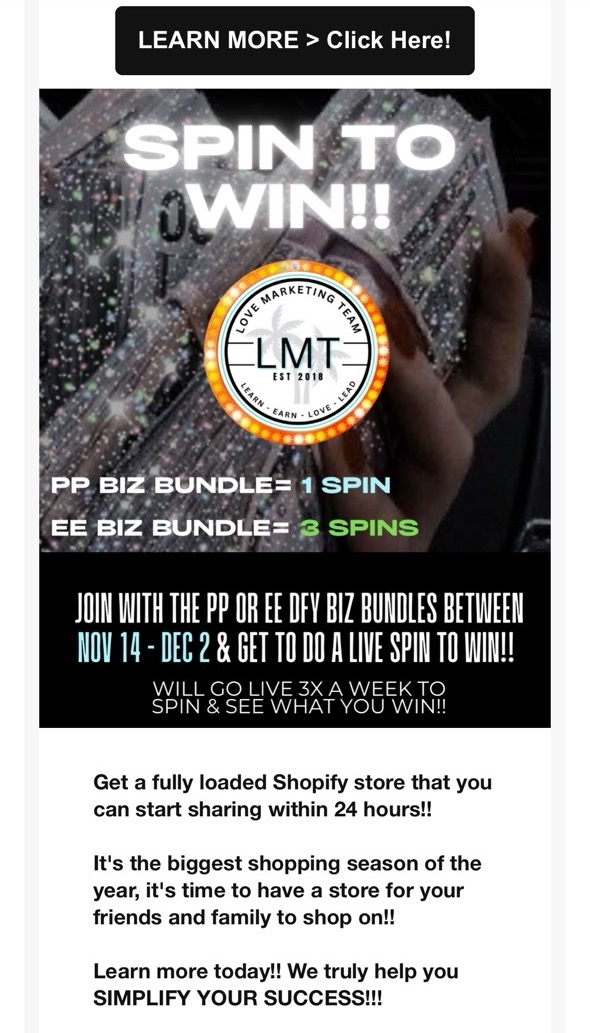
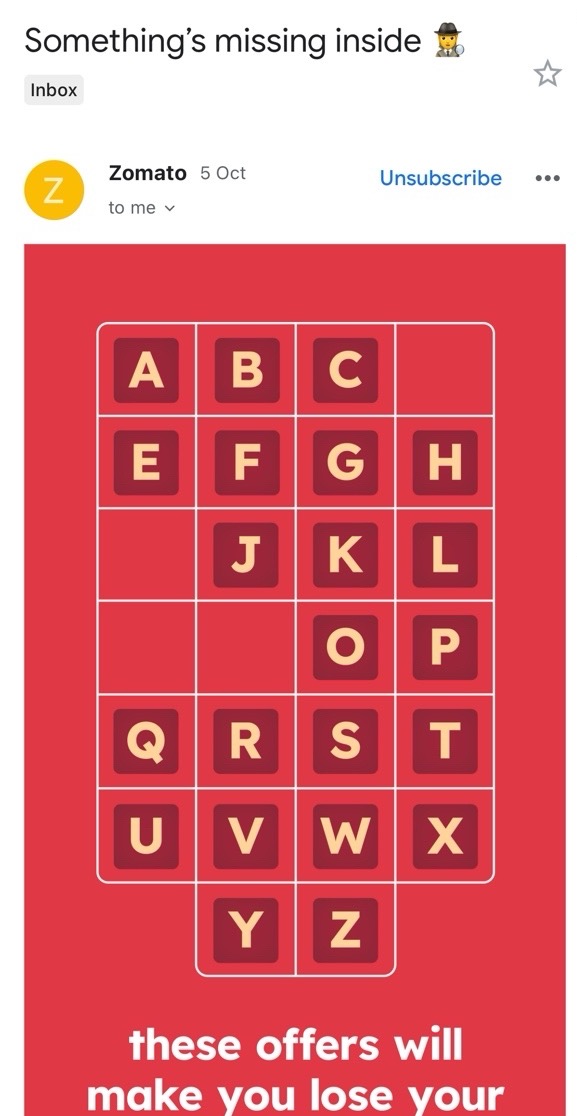
As the holiday season approaches, people may start adding items from your store to their cart in preparation. Or they might have checked out one of your holiday pages.
However, life can get in the way. They might end up forgetting to check out their cart or come back to your website.
To prevent cart abandonment, you can use retargeting. Retargeting allows you to target visitors who have left your website.
Here’s how retargeting works:
- A visitor discovers your webpage either from Google, social media, or another channel.
- Your ad management software sets a cookie on the visitor’s browser, which allows you to show ads to these visitors.
- When the visitor leaves your website and surfs the web, you can show ads and persuade them to return to your website
Depending on where they are on the buyer’s journey, you can convince them to take the next step.
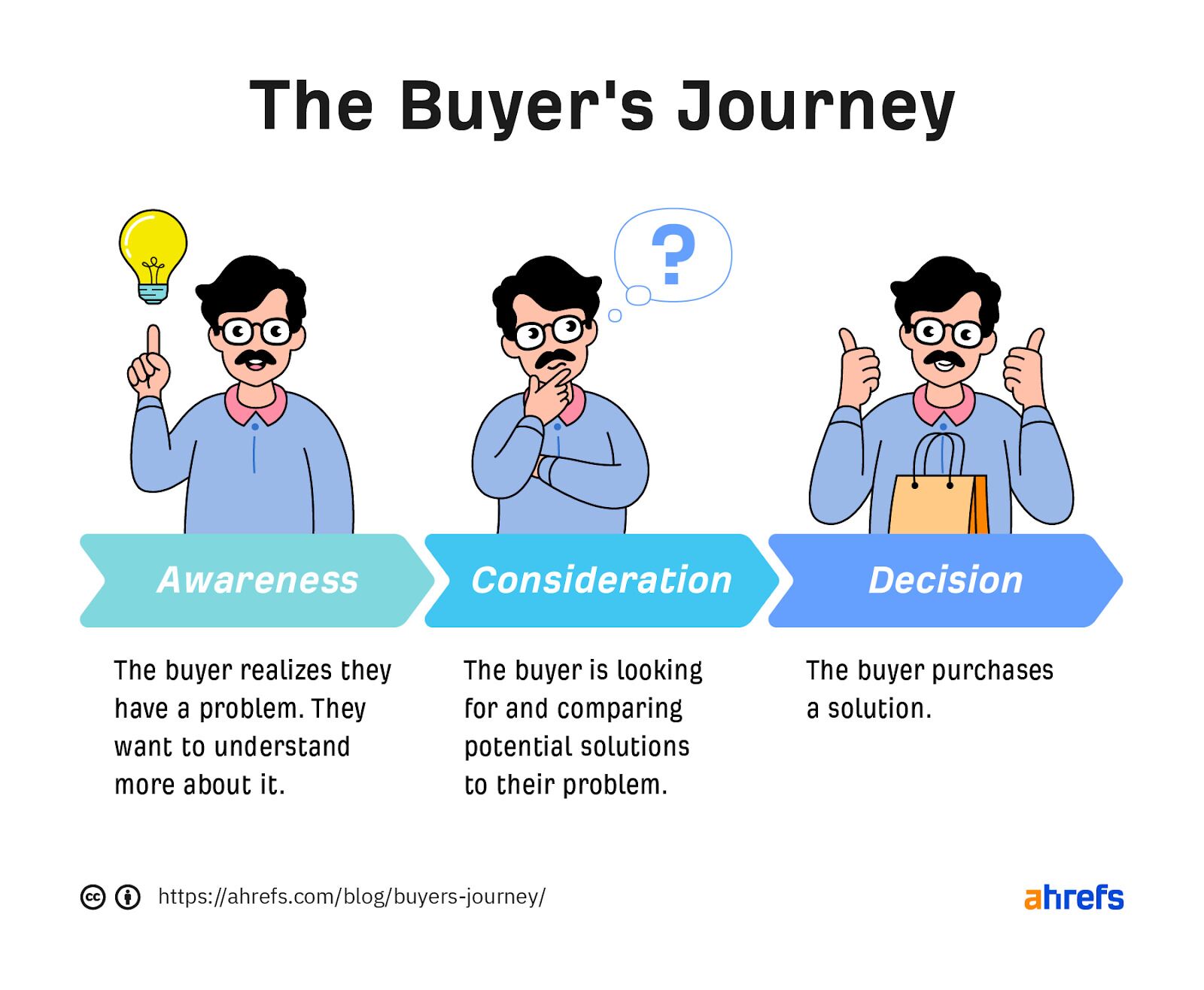
For example, if they’ve only checked out your deals page and haven’t added any items to the cart, you’d want to set your retargeting ad to get them to come back to your deals page again.
On the other hand, if they already have a full cart, you’d want to create an ad to remind them to check out.
Final thoughts
Kapil Ochani reminds us of one of the most important things you should do during the holiday season: Never run out of stock.

Ultimately, no matter how fancy or well-prepared your holiday marketing campaigns are, no marketing can save you if you cannot deliver product.
Did I miss out on any important holiday marketing strategies? Let me know on LinkedIn.
Source link : Ahrefs.com



